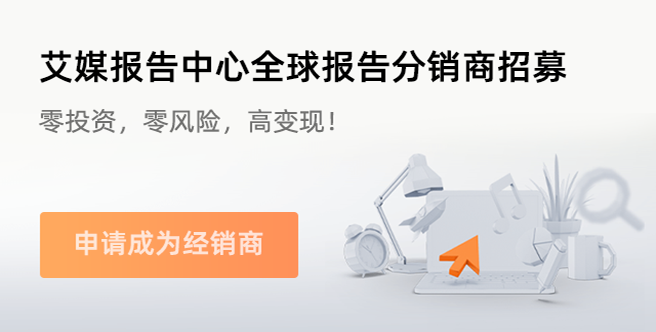关于“小熊”的报告
艾媒咨询|2020年5-6月中国家电行业市场运行及典型企业分析双月度报告
本报告研究涉及企业/品牌/案例:格力,美的。
从2020年一季度的数据看,中国家电行业国内市场销售规模为1172亿元,同比下降36.1%。同时,一季度家电累计出口规模为736亿元,同比下降12.7%。艾媒咨询分析师认为,随着疫情对中国影响的逐步减弱,以及夏季对空调、冰箱等制冷设备需求的季节性增长,特别是家电直播电商等形式的逐步成熟,预计第二季度家电行业的国内销售会逐步回暖,但出口形势依然不容乐观。
From the data of the first quarter of 2020, the domestic market scale of China's home appliance industry was 117.2 billion yuan, a year-on-year decrease of 36.1%. At the same time, the cumulative export scale of home appliances in the first quarter was 73.6 billion yuan, a year-on-year decrease of 12.7%. iiMedia Research believe that with the gradual weakening of the impact of the epidemic on China and the seasonal increase in demand for air-conditioning, refrigerators and other refrigeration equipment in summer, especially the gradual maturity of home appliance live broadcast e-commerce and other forms, it is expected that the appliance industry Of domestic sales will gradually pick up, but the export situation is still not optimistic.艾媒报告|2019中国大众消费企业IPO分析报告
本报告研究涉及企业/品牌/案例:新乳业,西麦食品,天味食品,丸美股份,立华股份,有友,日晨股份,华致酒行,小熊家电,中国飞鹤,瑞幸咖啡,新诺威,久量股份,仙乐健康,三只松鼠,嘉艺控股,植华集团,百威亚太,博尼控股,幸福来,优品360,太兴集团,利华控股集团,香态食品,登辉控股,赏之味
iiMedia Research(艾媒咨询)数据显示,2019年共27家大众消费企业首次公开募股,其中44.4%为食品饮料行业企业。这些企业中有13家沪深股上市,14家境外上市。中国大众消费企业中沪深股上市的占比达56%,退市情况相较境外市场保持稳定。市值排名top10的中国大众消费企业中8家来自食品饮料行业,而2018-2019市值涨幅top10的中国大众消费企业7家来自服装行业。艾媒咨询师认为,大众消费企业中食品饮料领域的巨头公司仍保持竞争优势,服装行业较其他行业具有更多的上市空间。2019年大众消费企业在沪深股和港股退市数目增加,部分大众消费企业面临着库存、门店、获客等多方面的问题, 大众消费企业需要对产品和服务及时进行创新和升级,才能更好地应对新产品、新零售的挑战。
As the data of iiMedia Research showed, there are 27 IPOs of mass-marketed companies in 2019, of which 44.4% are food and beverage companies. 13 of them are listed in Shanghai and Shenzhen stocks market, and 14 are listed overseas. Among the mass-marketed companies in China, the listing of Shanghai and Shenzhen shares accounted for 56%, and the delisting situation remained stable compared to the overseas market. 8 of the Top 10 Chinese consumer companies by market capitalization are from the food and beverage industry, and 7 of the Top 10 Chinese mass-marketed companies by market capitalization of 2018-2019 are from the apparel industry. Analyst from iiMedia Research believes that, the giant companies in the food and beverage sector of mass-marketed companies still maintain competitive advantages, and the apparel industry has more listing space than other industries. In 2019, the number of delisting enterprises from Shanghai and Shenzhen stocks and Hong Kong stocks will increase. Some mass-marketed companies face problems such as inventory, stores, and customer acquisition. Mass-marketed companies need to innovate and upgrade their products and services in time to meet the challenges of new products and new retail.艾媒报告| 2019~2020年中国婴幼儿托育产业发展白皮书
本报告研究涉及企业/品牌/案例:金睿家,纽诺教育,多乐小熊,馨心教育,袋鼠麻麻,圣顿教育,Urjoy school ,和菀投资,安赐资本,广州创玺企业,广东文化产业,新东方,合力资本,光速中国,双湖资本,睦米,优贝乐,YOKID,抱抱熊,爱乐祺
随着全面放开二胎政策的落实、育儿观念的改变及育儿需求的提升,中国0-3岁婴幼儿托育服务市场迎来更广阔的发展空间和机会。iiMedia Research(艾媒咨询)数据显示,2019年中国婴幼儿数量预计超5000万,48%的家长对托育服务有需求。预计在2020年,中国婴幼儿托育市场规模将突破两千亿元。现阶段幼儿家庭主力人群以80、90后为主,双薪家庭下隔代教育普遍存在。随着家庭照料人力问题的矛盾激化及幼儿成长需求的日益提升,专业、品质、安全的婴幼儿托育服务开始受到更多幼儿家庭的关注。艾媒咨询分析师认为,幼儿家庭对婴幼儿托育服务专业性需求较高,综合资质或成托育服务机构提升竞争优势的关键所在。此外,随着政府相关指导意见的发布,中国婴幼儿托育市场有望从基础设施、从业人员、课程品质等全方位构建服务新业态,社区托育服务将进一步普及。
With the implementation of the two-child policy, the change of child-rearing concept and the improvement of child-rearing demand, China's child-care service market for 0-3-year-old infants has ushered in broader space and opportunities for development. According to iiMedia Research, the number of infants in China is expected to exceed 50 million in 2019, with 48% of parents demanding childcare services. It is estimated that in 2020, China's infant care market will exceed 200 billion yuan. At present, the majority of children in the family are born in the 1980s and 1990s, and the second-generation education in double-income families is common. With the intensification of the problem of family care manpower and the increasing growth of children's needs, professional, quality and safety infant care services have begun to receive more attention from children's families. Imedia consulting analysts believe that infant families have a high demand for professional infant care services, and the key to enhancing the competitive advantage lies in the comprehensive qualification or the chengcheng child care service institutions. In addition, with the release of relevant government guidelines, China's infant care market is expected to build a new type of service from infrastructure, practitioners, curriculum quality and other aspects, and community care services will be further popularized.艾媒报告|2019全球及中国婴幼儿托育产业现状与发展趋势报告
本月报涉及企业/品牌/案例包括:纽诺教育、KinderCare、多乐小熊、馨心教育、袋鼠麻麻、圣顿教育、Urjoy school、朋恩日托、Bright Horizons Family Solutions、Learning Care Group、Goddard Systems、Primrose Schools、Childcare Network、Nobel Learning Communities、The Learning Experience、Kiddie Academy、Kids 'R' Learning Academies、孩盟国际、MoreCare茂楷、嗨妈宝贝Harborbabe
婴幼儿托育市场正在兴起,美、英、法、日等国婴幼儿托育行业发展较为成熟,均出台了一系列政策法规引导其发展,2018年英国接受托育服务的儿童超3.2万,日本将于2019年10月无偿提供公立托育服务。中国市场方面,从2016年开始,政府在相关政策法规中多次提及发展托育。特别是2019年5月10日国务院发布托育行业指导意见,使得托育成为投资热点。目前,中国婴幼儿托育行业发展存在运营体系不成熟、缺乏规范监管、专业师资少等问题。尽管中国经济发达地区如北京、上海、广东等较为重视婴幼儿托育,但中国婴幼儿入托率仅4.3%,与OECD国家33.2%的平均入托率仍有较大差距,中国托育行业仍需规范,未来有较大发展潜力。
Infant care market is on the rise. The development of infant care industry in some contries such as the United States, Britain, France and Japan is relatively mature. A series of policies and regulations have been introduced to guide its development. In 2018, the number of children receiving nursery services in the UK exceeded 32,000. Japan is going to provide public care services free of charge in October 2019. In the Chinese market, starting from 2016, the government has repeatedly mentioned the development of childcare in relevant policies and regulations. In particular, on May 10, 2019, the State Council issued guidance on the infant care industry, making it a hot spot for investment. At present, the development of China's infant and child care industry has problems such as immature operating system, lack of standardized supervision, and lack of professional teachers. Although China's economically developed regions such as Beijing, Shanghai, and Guangdong Province pay more attention to infant care, the infant enrollment rate in China is only 4.3%, which is still far from the average enrollment rate of 33.2% in OECD countries. Infant care industry still need standardization, and there is great potential for development in the future.
















